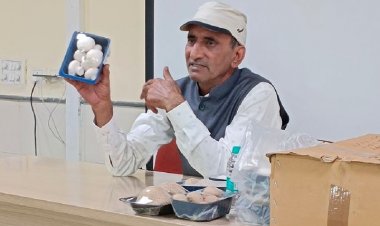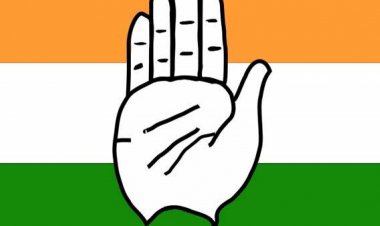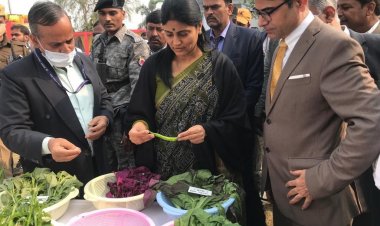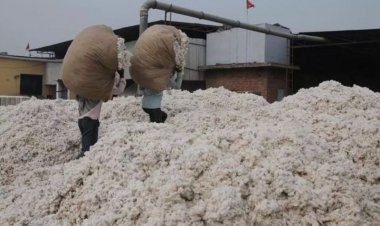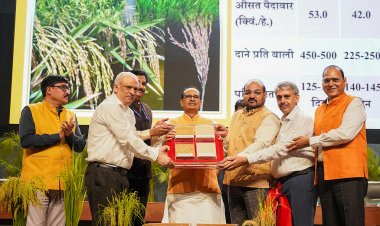Crop Burning Cases are More in Uttar Pradesh than Haryana, Cases Lower in Punjab Also
According to data from satellite remote sensing by the IARI, between September 15 and October 25, 849 stubble burning incidents were recorded in Uttar Pradesh, 869 in Madhya Pradesh, and 689 in Haryana. Punjab recorded the highest number of field fires during this period with 1,749 cases, while Rajasthan had 442 and Delhi had 11 incidents.
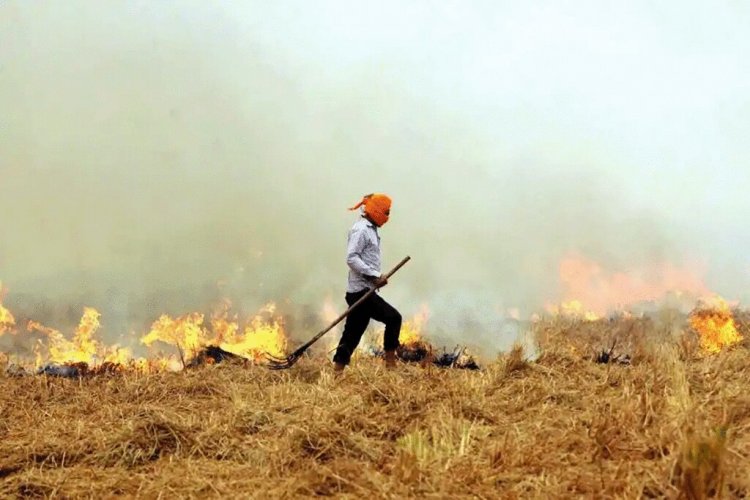
This year, after the paddy harvest, stubble burning incidents have been reported more frequently in Uttar Pradesh and Madhya Pradesh than in Haryana. Satellite monitoring of fires in fields has revealed this trend. According to data from satellite remote sensing by the Indian Agricultural Research Institute (IARI), between September 15 and October 25, 849 stubble burning incidents were recorded in Uttar Pradesh, 869 in Madhya Pradesh, and 689 in Haryana. Punjab recorded the highest number of field fires during this period with 1,749 cases, while Rajasthan had 442 and Delhi had 11 incidents.
Why Do Farmers Burn Stubble?
Before sowing wheat in the Rabi season, farmers burn paddy stubble to clear fields. They get only about 15 days to prepare for the next crop, and decomposing paddy stubble directly into the soil is challenging in such a short period. Hence, farmers resort to burning it to clear the fields. However, stringent measures have been taken in Haryana and Punjab to control pollution from stubble burning. Cases are being filed against farmers, and red entries are being made in government records. Several farmers have even been arrested in Haryana.
Rise in Stubble Burning in UP and MP
As winter approaches, farmers in Haryana and Punjab are often blamed for increasing air pollution in Delhi. However, the IARI data shows a significant rise in field fires in Uttar Pradesh and Madhya Pradesh. In 2022, between September 15 and October 25, 561 and 210 stubble-burning incidents were reported in UP and MP, respectively, which have now risen to 849 and 869 this year. Meanwhile, stubble burning cases in Haryana have decreased from 1,372 to 689 over the last two years.

Decrease in Field Fires in Haryana and Punjab
Punjab has also seen a decline in stubble-burning incidents, though it still has the highest number of cases. From September 15 to October 25, 2022, Punjab recorded 5,798 stubble burning cases, which dropped to 2,704 in 2023 and further to 1,749 in 2024.
According to a report by the environmental organisation Climate Trends, between 2019 and 2023, incidents of stubble burning in Haryana and Punjab decreased. In Haryana, the number of fires dropped from 14,122 in 2019 to 7,959 in 2023. In Punjab, incidents fell from 95,048 in 2020 to 52,722 in 2023. However, despite the decrease, Delhi’s air quality is still impacted, as most incidents occur from September to December.
Dr. Palak Balyan, Research Lead at Climate Trends, told Rural Voice that stubble fires are just one of many causes of Delhi’s air pollution. However, with falling temperatures and paddy stubble burning, pollution in Delhi rises. The reduction in stubble burning in Haryana and Punjab suggests that farmers are becoming more aware of stubble management. Dr. Balyan believes that controlling other factors, such as vehicle emissions and construction dust, is also essential to tackle Delhi's pollution problem.
Integrated Efforts Needed
Punjab’s Agriculture Minister Gurmeet Singh Khuddian stated that the decline in stubble burning reflects the efforts of the Punjab government and farmers. Initiatives like CRM (Crop Residue Management) machines, alternative uses for stubble, and appointing nodal officers have shown positive results. Haryana’s Agriculture Minister Shyam Singh Rana credited awareness, incentives for stubble management, and subsidised agricultural machinery for the decrease in number of fires.
A senior agricultural scientist at IARI noted that farmers’ awareness and participation in stubble management are increasing. With better agricultural machinery, stubble management, and alternative uses, incidents of stubble burning are decreasing. Integrated efforts and a collaborative approach are essential to address this issue effectively.



 Join the RuralVoice whatsapp group
Join the RuralVoice whatsapp group


















